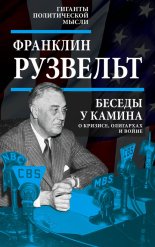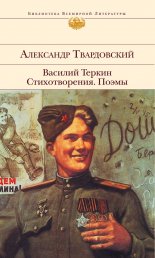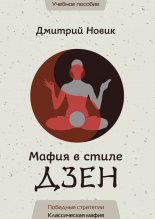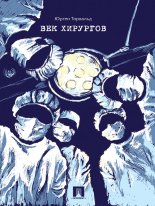Арийский миф в современном мире Шнирельман Виктор
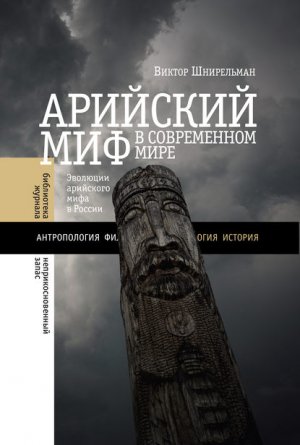
Шнирельман В. А., Пейрос И. И. 1992. В поисках прародины дравидов (лингвоархеологический анализ) // Вестник Древней Истории, № 1: 135–148.
Шокало О. 1993. Традицiйнi обряди украiнцiв // Укранський Свiт, № 1–2: 36–37.
Шокало О. 1994а. Життя украiнського духу // Укранський Свiт, № 1–2: 4–5.
Шокало О. 1994б. Орiйська доба Украни // Укранський Свiт, № 3–4: 4–5.
Шокало О. 1996а. Козак-Мамай: образ укранського лицаря // Укранський Свiт, № 1–3: 26.
Шокало О. 1996б. Спинаймось на обое крил // Укранський Свiт, № 4–6: 5.
Шошков Е. 2000. Звезда и смерть Глеба Бокия // Родина, № 7: 68–71.
Штепа В. И. 1991–1992. Влес-книга // Истоки, № 2–6.
Штепа В. 1995. Путь с огнем во льдах // Атака, № 72: 7–9.
Штепа В. В. 2004. RUтопия. Екатеринбург: Ультра-культура.
Штепа В. В. 2007а. За древнерусское вече! // Штепа В. Записки RUтописта. СПб.: Вольная петербургская типография, 2008.
Штепа В. В. 2007б. Раса и масса // Штепа В. Записки RUтописта. СПб.: Вольная петербургская типография, 2008.
Штепа В. В. 2008. Записки RUтописта. СПб.: Вольная петербургская типография.
Штепа В. В. 2011. Вопросы национализма и ответы регионализма // ИNАЧЕ, 2 сентября (http://www.inache.net/mnogo/607).
Шубин-Абрамов А. Ф. 1996. Буковникъ ВсеЯСветной Грамоты. М.: Б. и.
Шукуров М. 1997. «Таджикский феномен» академика Н. Негматова и его значение // Негматов Н. Таджикский феномен: история и теория, с. 5 – 19. Душанбе: Оли Сомон.
Шукуров Ш. 1994. Евразийская проблема в свете некоторых рассуждений Л. Н. Гумилева // Евразийская перспектива, с. 184–196. М.: ИРА «Русский мир».
Шукуров Ш. 2005. Чужеземцы – посланцы богов // 60 параллель, № 1 (http://magazine.60parallel.org/ru/magazine/2005/7/89).
Шукуров Ш., Шукуров Р. 1996. Центральная Азия (опыт истории духа). М.: Панорама.
Шукуров Ш., Шукуров Р. 1998. О воле к культуре // Центральная Азия и Кавказ, № 1: 163–172.
Шукуров Ш., Шукуров Р. 1999. О воле к культуре // Центральная Азия и Кавказ, № 2: 196–205.
Шюре Э. 1914. Великие посвященные. Очерк эзотеризма религий. Калуга: Земская управа.
Щекатихин Е. А. 1997. Почему необходим союз православных и венедов // Родные просторы, № 2: 3–4.
Щербакiвський В. 1941. Формування украiнськоi нацii. Прага: Тищенко.
Щербаков В. И. 1987. Тропой Трояновой // А. Смирнов (ред.). Дорогами тысячелетий. Кн. 1: 161–202. М.: Молодая гвардия.
Щербаков В. И. 1988а. Века Трояновы // М. Ковалев (ред.). Дорогами тысячелетий. Кн. 2: 60 – 116. М.: Молодая гвардия.
Щербаков В. И. 1988б. Загадка языческого леопарда // Памятники отечества, № 1: 53–59.
Щербаков В. И. 1990. Все об Атлантиде. М.: Общество по изучению тайн и загадок Земли, Ларге.
Щербаков В. И. 1991. Асгард – город богов. М.: Молодая гвардия.
Щербаков В. И. 1992. Встречи с Богоматерью // И. К. Ларионов и др. (сост.). Утро Богов, с. 261–557. М.: Молодая гвардия.
Щербаков В. И. 1995а. Тайны этрусков рассеиваются // Чудеса и приключения, № 8: 10–14.
Щербаков В. И. 1995б. Века Трояновы. Книга для учащихся старших классов. М.: Просвещение.
Щербаков В. И. 1996а. Две вазы из Атлантиды // Чудеса и приключения, № 1: 34–37.
Щербаков В. И. 1996б. Абсолютное оружие Горгон // Чудеса и приключения, № 5: 18–20.
Щербаков В. И. 1996 в. Подлинная история Золотой Рыбки // Чудеса и приключения, № 9: 37.
Щербаков В. И. 1996 г. Тайны эры Водолея. М.: Беловодье.
Щукин Е. 1994а. Мертвая вода есть. Живой не будет? // Наше отечество, № 31: 2.
Щукин Е. 1994б. Крестовый поход // Наше отечество, № 38: 1.
Эвола Ю. 1995. Ориентация // Наследие предков, № 1: 21–26.
Эдельштейн М. 2012. Скажи мне, кто твой редактор… // Лехаим, июнь. № 6.
Элиаде М. 1987. Космос и история. М.: Прогресс.
Эрлихман В. В. 2011. Фантастическая «Хроника Ура Линда» // В. А. Шнирельман, А. Е. Петров (ред.). Фальсификация исторических источников и конструирование этнократических мифов, с. 181–186. М.: ИА РАН.
Эрматов М. 1968. Этногенез и формирование узбекского народа. Ташкент: Узбекистан.
Эткинд А. 1996. Содом и Психея. Очерки интеллектуальной истории Серебряного века. М.: ИЦ-Гарант.
Югай Г. А. 2003а. Общность народов Евразии – арьев и суперэтносов – как национальная идея: Россия и Корея. М.: Беловодье.
Югай Г. А. 2003б. Об арийских истоках и перспективах казахской цивилизации // Казахская цивилизация, № 2: 11–23.
Югай Г. А. 2004. Арийство и семитизм евразийских народов (русские, казахи, кыргызы, корейцы, японцы…). М.; Алматы: Корейское научно-техническое общество «Кахак».
Югов А. К. 1949. Родина Ахиллеса // Крым, № 3: 178–191.
Югов А. К. 1965. Полно! // Известия, 6 февраля. С. 5.
Югов А. К. 1968. Не могу согласиться // Советская Россия, 20 ноября. С. 3.
Югов А. К. 1975. Думы о русском слове. М.: Современник.
Южаков С. Н. 1885а. Афганистан и сопредельные страны. Политико-исторический очерк. СПб.: Общественная польза.
Южаков С. Н. 1885б. Англо-русская распря. Небольшое предисловие к большим событиям. СПб.: Общественная польза.
Юнг К. Г. 1994. О современных мифах. М.: Практика.
Юрефова А. 1991. Иван Ефремов и «Агни-Йога» // Наука и религия, № 4: 40–44.
Юрлова Е. С. 2003. Индия: от неприкасаемых к далитам. Очерки истории, идеологии и политики. М.: ИВ РАН.
Юсупов Х. 1991. Пыль вокруг Арии // Туркменская искра, 3 апреля. С. 3.
Юсуф Ш. 1996. «Тюркский фактор» раскола // Независимая газета, 9 апреля. С. 3.
Яворский И. Л. 1893. Средняя Азия. Культурные успехи и задачи в ней России. Одесса: Тип. Штаба Войск Одесского военного округа.
Яворський В. 1992. Вiдлуння великоi Украiни. Сучасна концепцiя украiнського нацiоналiзму // Напрям (Львiв), № 3: 1 – 71.
Якубовский А. Ю. 1941. К вопросу об этногенезе узбекского народа. Ташкент: УзФАН.
Янин В. Л. 2001. Древнейшая славянская книга // Наука и жизнь, № 2: 7–9.
Яценко Б. 1970. Про Троянь // Архiви Украiни, № 6: 34–43.
Яценко Б. 1991. Украiна i Русь у ретроспективi // Iндо-Европа, № 1: 61–67.
Яценко Б. 1994. «Велесова книга» – пам’ятка IX столiття // Русь Киiвська (Киiв), № 2 (2): 10.
Яценко Б. 1996. Таемниця осiйського гратфiтi VIII столiття до новоi доби // Украiнське слово, 15 августа: 12.
Яшин В. Б. 1994а. Представления о севере Омской области в современных нетрадиционных религиозных учениях // А. А. Кожухарь, Б. А. Коников (ред.). Таре – 400 лет. Проблемы социально-экономического освоения Сибири. Часть 2: 88–93. Омск: Администрация Омской области.
Яшин В. Б. 1994б. Русское неоязычество (некоторые особенности идеологии) // Н. А. Томилов (ред.). Русский вопрос: история и современность. Часть 1: 101–106. Омск: Министерство культуры РФ.
Яшин В. Б. 1997а. Арио-сибирские контакты в древности и современные маргинальные духовные учения // Россия и Восток: филология и философия. Материалы IV международной научной конференции «Россия и Восток: проблемы взаимодействия», с. 243–246. Омск: Омский гос. университет.
Яшин В. Б. 1997б. Устное сообщение.
Яшин В. Б. 2001. «Церковь православных староверов-инглингов» как пример неоязыческого культа // В. А. Шнирельман (ред.). Неоязычество на просторах Евразии, с. 56–67. М.: Библейско-богословский институт.
Яшкин Л. А. 1978. По поводу новых материалов о Миклухо-Маклае // Известия Всесоюзного географического общества, т. 110, вып. 3: 279–281.
Adler, Margot 1986. Drawing down the Moon. Boston: Beacon Press.
Akbarzadeh, Sh. 1999. National identity and political legitimacy in Turkmenistan // Nationalities papers, vol. 27, no. 2.
Allchin, F. R. 1995. The archaeology of early historic South Asia. Cambridge: Cambridge Univ. Press.
Alles, Gregory D. 2002. The science of religions in a fascist state: Rudolf Otto and Jacob Wilhelm Hauer during the Third Reich // Religion, vol. 32, no. 3: 177–204.
Allworth, Eduard A. 1990. The Modern Uzbeks: From the fourteenth century to the present: A cultural history. Stanford.
Amaudruz, G. – A. 1993. Попытки гностиков, розенкрейцеров, теософов и рерихианцев «освоить» Эру Водолея // Родные просторы, № 3.
Anthony, David W. 2007. The horse, the wheel and language. Princeton: Princeton Univ. Press.
Atkin, Muriel 1994. Tajiks and the Persian world // Beatrice F. Manz (ed.). Central Asia in historical perspective, p. 127–143. Boulder: Westview.
Baber, Z. 2004. ‘Race’, religion and riots: the ‘racialization’ of communal identity and conflict in India // Sociology, vol. 38, no. 4: 701–718.
Bailey, Alice A. 1976. The rays and the initiations. N. Y.: Lucis Publication Co. (рус. изд. Лучи и посвященные. М., 1996).
Baird, J. W. 1992. To die for Germany. Heroes in the Nazi Pantheon. Bloomington: Indiana University Press.
Bergunder, M. 2004. Contested past: anti-Brahmanical and Hindu nationalists reconstructions of Indian prehistory // Historiographia Linguistica, vol. 31, no. 1: 59 – 104.
Bhatt, Chetan 1997. Liberation and purity. Race, new religious movements and the ethnics of postmodernity. London: UCL Press.
Bhatt, Chetan 1999. Ethnic absolutism and the authoritarian spirit // Theory, culture and society, vol. 16, no. 2: 65–85.
Bhatt, Chetan 2000. The lore of the homeland: Hindu nationalism and indigenist ‘neoracism’ // Back L., Solomos J. (eds.). Theories of race and racism. A reader, p. 573–593. London: Routledge.
Bhatt, Ch., Mukta, P. 2000. Hindutva in the West: mapping the antinomies of diaspora nationalism // Ethnic and racial studies, vol. 23, no. 3: 414–421.
Bhattacharya, N. 1993. Myth, history and the politics of Ramajanmabhumi // S. Gopal (ed.). Anatomy of a confrontation. The rise of communal politics in India, p. 122–140. London: Zed Books.
Biddiss, Michael D. 1970. Father of the racist ideology. The social and political thoughts of Count Gobineau. London: Weidenfeld & Nicolson.
Blackburn, Gilmer W. 1985. Education in the Third Reich: a study of race and history in the Nazi textbooks. Albany: State University of New York.
Blakkisrud H., Nozimova Sh. 2010. History writing and nation-building in post-independence Tajikistan // Nationalities Papers, vol. 38, no. 2: 173–189.
Bohr, Annette 1998. The Central Asian states as nationalizing regimes // Graham Smith, Vivien Law, Andrew Wilson, Annette Bohr, Edward Allworth. Nation-building in the Post-Soviet borderlands, p. 139–164. Cambridge: Cambridge University Press.
Bonewitz, P. E. I. 1971. Real magic. Berkeley: Creative Arts Books.
Bongard-Levin, G. 1980. The origins of Aryans: from Scythians to India. Delhi: Heineman.
Bottero, J. 1954. Le probleme des Habiru a la 4e rencontre assyriologique internationale. Paris.
Brearley, Margaret 1994. Possible implication of the New Age movement for the Jewish people // J. Webber (ed.). Jewish identities in the New Europe, p. 255–272. London: Littman Library of Jewish Civilization.
Brkovi, Jevrem 1996. Glosarij. Zagreb: Aurora.
Brown, D. M. 1965. The nationalist movement. Indian political thought from Ranade to Bhave. Berkeley: University of California Press.
Cashman, R. I. 1975. The myth of the Lokamanya. Tilak and mass politics in Maharashtra. Berkeley: Univ. of California Press.
Cecil, R. 1972. The myth of the Master Race: Alfred Rosenberg and Nazi ideology. London: B. T. Batsford.
Chakrabarti, D. K. 1994. The Aryan hypothesis in Indian archaeology // Manthan, vol. 15, no. 2–3: 141–146.
Chandler, A. R. 1968. Rosenberg’s Nazi myth. N. Y.: Greenwood Press.
Clavel F. – T. B. 1843. Histoire pittoresque de la Franc-maonnerie et des Socits secretes anciennes et moderns. Paris: Pagnerre.
Clifton, Chas S. 2006. Her hidden children: the rise of Wicca and paganism in America. Lanham, MD: AltaMira.
Cole, John R. 1980. Cult archaeology and unscientific method and theory // M. Schiffer (ed.). Advances in archaeological method and theory. Vol. 3. P. 1 – 33. N. Y.: Academic Press.
Conte, douard, et Essner, Cornelia 1995. La qute de la race. Une anthropologie du Nazisme. Paris: Hachette Livre.
Conway J. S. 1968. The Nazi persecution of the Churches, 1933–1945. London: Weidenfeld and Nicolson.
erny, V. 1995. Vyvoj a zlociny panslavismu. Praha: Institut pro stredoevropskou kulturu a politiku.
Davies, Alan T. 1975. The Aryan Christ: a motif in Christian anti-Semitism // Journal of Ecumenical studies, vol. 12, no. 4: 569–579.
Davies, Alan T. 1981. The Aryan myth: its religious significance // Studies in religion, vol. 10, no. 3: 287–298.
Dayananda, S. 1981. The light of truth. Allahabad: Dr Ratna Kumari Svadhyaya Sansthana.
Del Boca, Angelo and Giovana, Mario 1969. Fascism today. A world survey. N. Y.: Random House.
Demoule, Jean-Paul 2014. Mais o sont passs les Indo-Europens? Le mythe d’origine de l’Occident. Seuil: La Librairie du XXIe sicle.
Diat, Frederique 1984. Olzhas Sulejmenov: «Az i Ja» // Central Asian Survey. Vol. 3, No. 1: 101–121.
orevi, Tihomir R. 1923. Na narodni ivot. Belgrade: Srpska knjievna zadruga.
Duchinski, E. – H. 1858. Zasady Dziejow Polski i innych Krajow Slowianskich i Moskwy. Czesc 1. Paris.
Duchinski, E. – H. 1864. Necessite des reformes dans d’exposition de l’histoire des peuples aryas-europeens et tourans particulierement des Slaves et des Moscovites. Paris: Friedrich Klincksieck.
Dulov, V. 2013. Bulgarian society and the diversity of Pagan and Neo-pagan themes // Scott Simpson and Kaarina Aitamurto (eds.). Modern Pagan and Native Faith Movements in Central and Eastern Europe, p. 195–212. Durham, UK: Acumen.
Dumont, Louis 1994. German Ideology. From France to Germany and back. Chicago and London: University of Chicago Press.
Dunlop, John B. 1983. The faces of contemporary Russian nationalism. Princeton, N. J.: Princeton Univ. Press.
Eisenberg, B. 1982. The Scandinavians // J. S. Roucek and B. Eisenberg (eds.). America’s ethnic politics, p. 323–343. Greenwich: Greenwood Press.
Elst, Konrad. 1993. Indigenous Indians: Agastya to Ambedkar. New Delhi: Voice of India.
Embree, A. T. 1988. India’s search for national identity. Delhi: Chanakya Publications.
Erdosy, G. (ed.). 1995. The Indo-Aryans of Ancient South Asia: language, material culture and ethnicity. Berlin: Walter de Gruyter.
Ferguson, M. 1981. The Aquarian conspiracy. Personal and social transformation in the 1980s. London: Routledge and Kegan Paul.
Fest, J. C. 1979. The face of the Third Reich. London: Penguin Books.
Fetten, F. G. 2000. Archaeology and anthropology in Germany before 1945 // H. Hrke (ed.). Archaeology, Ideology and Society. The German Experience, p. 140–179. Frankfurt am Main: Peterlang.
Field, Geoffrey G. 1981. Evangelist of race: the Germanic vision of Houston Stewart Chamberlain. N. Y.: Columbia University Press.
Figgis, John Neville 1917. The will to freedom, or the Gospel of Nietsche and the Gospel of Christ. London: Longmans, Green and Co.
Figueira, Dorothy M. 2002. Aryans, Jews, Brahmins: theorizing authority through myths of identity. Albany: State University of New York Press.
Fox, Richard G. 1990. Hindu nationalism in the making, or the rise of the Hindian // R. G. Fox (ed.). Nationalist ideologies and the production of national cultures, p. 63–80. Washington, D. C.: American Ethnological Society.
Frawley, D. 1994. The myth of the Aryan invasion of India. New Delhi: Voice of India.
Freed, Stanley A. and Ruth S. Freed 1980. Origin of the swastika // Natural History, vol. 89, no. 1: 68–75.
Fry, C. L. 1990. «What God doth the wizard pray to»: Neo-Pagan witchcraft and fantasy fiction // Extrapolation, vol. 31, no. 4: 333–346.
Gardell, Mattias 2005. White racist religions in the United States: from Christian Identity to Wolf Age Pagans // James R. Lewis, J. A. Petersen (eds.). Controversial new religions, p. 387–422. Oxford; Oxford Univ. Press.
Gimbutas, Maria 1977. The first wave of Euroasian steppe pastoralists into Copper Age Europe // The Journal of Indo-European Studies, vol. 5, no. 4: 277–338.
Gimbutas, Maria 1985. Primary and secondary homeland of the Indo-Europeans // The Journal of Indo-European Studies, vol. 13, no. 1–2: 185–202.
Godwin, Joscelyn 1993. Arktos. The Polar myth in scientific symbolism, and Nazi survival. London: Thames and Hudson.
Goel, S. R. 1993. Hindus and Hinduism. New Delhi: Voice of India.
Goldstein, J. A. 1979. On racism and anti-Semitism in Occult and Nazism // Yad Vashem Studies, vol. 13: 53–72.
Golwalkar, M. S. 1939. We, or our nationhood defined. Nagpur: Bharat publications.
Gonda, J. 1975. Vedic literature. Wiesbaden.
Goodrick-Clark, Nicholas 1998. Hitler’s priestess. Savitri Devi, the Hindu-Aryan myth, and Neo-Nazism. New York: New York University Press.
Goodrick-Clark, Nicholas 2002. Black sun. Aryan cults, esoteric Nazism and the politics of identity. N. Y.: New York University Press.
Gorshenina S. 2012. L’archologie russe en Asie Centrale en situation coloniale: quelques approaches // Etudes de Lettres. Etudes pontiques. Histoire, historiographie et sites archologiques du bassin de la mer Noire (sur la dir. de Pscal Burgunder), Universit de Lausanne, Institut d’archologie, n° 290, no. 1–2. P. 183–219.
Gorshenina S., Rapin C. 2001. De Kaboul Samarcande. Les archologues en Asie Centrale. Paris: Gallimard.
Gould, W. 2004. Hindu nationalism and the language of politics in late colonial India. Cambridge: Cambridge Univ. Press.
Grant, W. J. 2005. The space of the nation: an examination of the spatial productions of Hindu nationalism // Nationalism and ethnic politics, vol. 11: 321–347.
Griffin, Roger 1993. Europe for the Europeans: fascist myths of the New Order, 1922–1992. Oxford (http://home.alphalink.com.au/~radnat/theoroes-right/theory1.html).
Griffiths, F. 1991. The Arctic in the Russian identity // L. W. Brigham (ed.). The Soviet maritime Arctic, p. 83 – 107. London: Belhaven Press.
Gugenberger, Eduard & Schweidlenka, Roman 1993. Die Fden der Nornen. Zur Macht der Mythen in politischen Bewegungen. Wien: Verlag fr Gesellschaftskritik.
Guseynova, Sevil 2008. Presentations of Islam in secondary secular schools in contemporary Azerbaijan // Internationale Schulbuchforschung. Jahrg. 4, Bd. 30: 841–853.
Hagemeister, Michael 1997. Russian cosmism in the 1920s and today // B. G. Rosenthal (ed.). The Occult in Russian and Soviet culture, p. 185–202. Ithaca and London: Cornell Univ. Press.
Hagemeister, Michael 2004. Anti-Semitism, occultism and theories of conspiracy in contemporary Russia – the case of Ilya Glazunov // V. Paperni, W. Moskovich (eds.). Anti-Semitism and Philo-Semitism in the Slavic World and Western Europe, p. 235–241. Haifa-Jerusalem.
Hagemeister, Michael 2011. The conquest of space and the bliss of the atoms: Konstantin Tsiolkovskii // E. Maurer, J. Richers, M. Rthers, C. Scheide (eds.). Soviet space culture: Cosmic enthusiasm in socialist societies, p. 27–41. N. Y.: Palgrave MacMillan.
Hamilton, A. 1971. The appeal of fascism. A study of intellectuals and fascism, 1919–1945. New York: MacMillan.
Harvey, Graham 1996. Heathenism: a North European pagan tradition // Ch. Hardman & G. Harvey (eds.). Paganism today, p. 49–64. London: Thorsons.
Haslip-Viera G., Ortiz de Montellano B., Barbour W. 1997. Robbing Native American Cultures: Van Sertima’s Afrocentricity and the Olmecs // Current Anthropology, vol. 38, no. 3: 419–441.
Heller, Leonid 2012. Away from the Globe. Occultism, esotericism and literature in Russia during the 1960s – 1980s // B. Menzel, M. Hagemeister, B. G. Rosenthal (eds.). The New Age of Russia. Occult and esoteric dimensions, p. 186–210. Berlin: Otto Sagner.
Hermand, Jost 1992. Old dreams of a new Reich: Volkisch utopias and national socialism. Bloomington: Indiana University Press.
History of Kazakhstan 1998. History of Kazakhstan. Essays. Almaty: Gylym.
Hitler, Adolf 1971. Mein Kampf. Boston: Houghton Mifflin.
Hobsbawm, Eric 1992. Ethnicity and nationalism in Europe // Anthropology today, vol. 8, no. 1: 3 – 13.
Ilaiah, Kancha 2009. Post-Hindu India. A Discourse in Dalit-Bahujan, Socio-Spiritual and Scientific Revolution. Osmania University, Hyderabad: Sage.
Ivakhiv, Adrian 2005a. In search of deeper identities: Neo-paganism and “Native Faith” in contemporary Ukraine // Nova Religio: The Journal of Alternative and Emergent Religions, vol. 8, no. 3: 7 – 38.
Ivakhiv, Adrian 2005b. Nature and ethnicity in East European Paganism: an environmental ethic of the religious right? // The Pomegranate, vol. 7, no. 2: 194–225.
Jacob-Friesen, K. H. 1934. Herman Wirths Ura-Linda-Chronik und die deutschen Vorgeschichtsforscher // Nachrichtenblatt fr deutsche Vorzeit. Bd. 10, no. 6. S. 130–135.
Jaffrelot, Ch. 1996. The Hindu nationalist movement in India. N. Y.: Columbia Univ. Press.
Jaffrelot, Ch. 1997. The idea of Hindu race in the writings of Hindu nationalist ideologues in the 1920s and 1930s: a concept between two cultures // P. Robb (ed.). The concept of race in South Asia, p. 327–354. Delhi: Oxford Univ. Press.
Jain, G. 1993. Limits of the Hindu Rashtra // K. Elst (ed.). Ayodhya and after. New Delhi: Voice of India.
Johnson, G. 1973. Provincial politics and Indian nationalism. Cambridge: Cambridge University Press.
Jones, K. W. 1976. Arya Dharm. Hindu consciousness in 19th-century Punjab. Berkeley: Univ. of California Press.
Jordan, Paul 2001. The Atlantis Syndrom. Gloucestershire: Sutton Publishing Limited.
Kak, S. C. 1989. Indus writing // The Mankind Quarterly, vol. 30, no. 1–2: 113–118.
Kak, S. C. 1992. The Indus tradition and the Indo-Aryans // The Mankind Quarterly, vol. 32, no. 3: 195–213.
Kaplan, Jeffrey 2002. The postwar paths of occult national socialism // Jeffrey Kaplan, Helne Lw (eds.). The cultic milieu: oppositional subcultures in an Age of Globalization. From Rockwell and Madole to Manson, p. 225–264. Walnut Creek: Altamira.
Karve, I. 1932. The Parasurama myth // Journal of the University of Bombay, July 1932, vol. 1, no. 1: 115–139.
Katz, Jacob 1986. The darker side of genius: Richard Wagner’s Anti-Semitism. Hanover: University Press of New England.
Keer, Dh. 1969. Lokamanya Tilak. Father of Indian freedom struggle. Bombay: Popular Prakashan.
King, Christine Elizabeth 1982. The Nazi state and the new religions: five case studies in non-conformity. N. Y.: The Edwin Mellen Press.
Korey, William 1995. Russian Antisemitism, Pamyat, and the Demonology of Zionism. Chur: Harwood Academic Publishers.
Kotani, Hiroyuki 2000. Historical formation of Hindu identity in relation to British colonial rule // H. Kotani, T. Fujii, F. Oshikawa (eds.). Fussing modernity: appropriation of history and political mobilization in South Asia, p. 5 – 20. Osaka: National Museum of Ethnology.
Kuzio, Taras 1998. Ukraine: State and nation building. London and New York: Routledge.
Lamberg-Karlovsky, C. C. 2002. Archaeology and language: The Indo-Iranians // Current Anthropology, vol. 43, no. 1: 63–88.
Laqueur, Walter 1993. Black hundred. The rise of the extreme right in Russia. N. Y.: Harper Collins.
Laruelle, Marlene 2005. Mythe aryen et rve imperial dans la Russie du XIX-e sicle. Paris: CNRS-ditions.
Laruelle, Marlene 2007. The return of the Aryan myth: Tajikistan in search of secularized national ideology // Nationalities papers, vol. 35, no. 1: 51–70.
Lefkowitz, Mary 1997. Not out of Africa. How Afrocentrism became an excuse to teach myth as history. N. Y.: Basic Books.
Lele, Jayant 2000. By faith alone: history as a weapon in the politics of hindutva // H. Kotani, T. Fujii, F. Oshikawa (eds.). Fussing modernity: appropriation of history and political mobilization in South Asia, p. 21–73. Osaka: National Museum of Ethnology.
Leube, Achim 1998. Zur Ur– und Frhgeschichtsforschung in Berlin nach dem Tode Gustav Kossinnas bis 1945 // Ethnographische-Archologische Zeitschrift, Bd. 39: 373–427.
Lewis, Bernard 1986. Semites and Anti-Semites. An inquiry into conflict and prejudice. N. Y.: W. W. Norton & Company.
Lubin, Nancy 1981. Assimilation and retention of ethnic identity in Uzbekistan // Asian affairs, vol. 12, pt. 3. P. 277–285.
MacDonald, Kevin C., Frank Y. C. Hung, Harriet Crauford 1995. Prehistory as propaganda // Papers from the Institute of Archaeology, vol. 6: 1 – 10.
Madhivanan, R. 1994. Phonetic value of the Indus script. Adyar, Madras: Tamil Canror Peravai.
Maha Vira 1979. Maha Vira. Spring Glen, N. Y.: The Ukrainian Native Faith.
Mallory, James P. 1989. In search of the Indo-Europeans: language, archaeology and myth. London: Thames and Hudson.
Mallory, James P. 1997. The homelands of the Indo-Europeans // R. Blench, M. Spriggs (eds.). Archaeology and language I. Theoretical and methodological orientations, p. 93 – 121. London: Routledge.
Marchand, S. L. 1996. Down from Olympus. Archaeology and Philhellenism in Germany, 1750–1970. Princeton: Princeton Univ. Press.
Masryk, Thomas G. 1968. Idealy humanitni. Praha: Melantrich.
